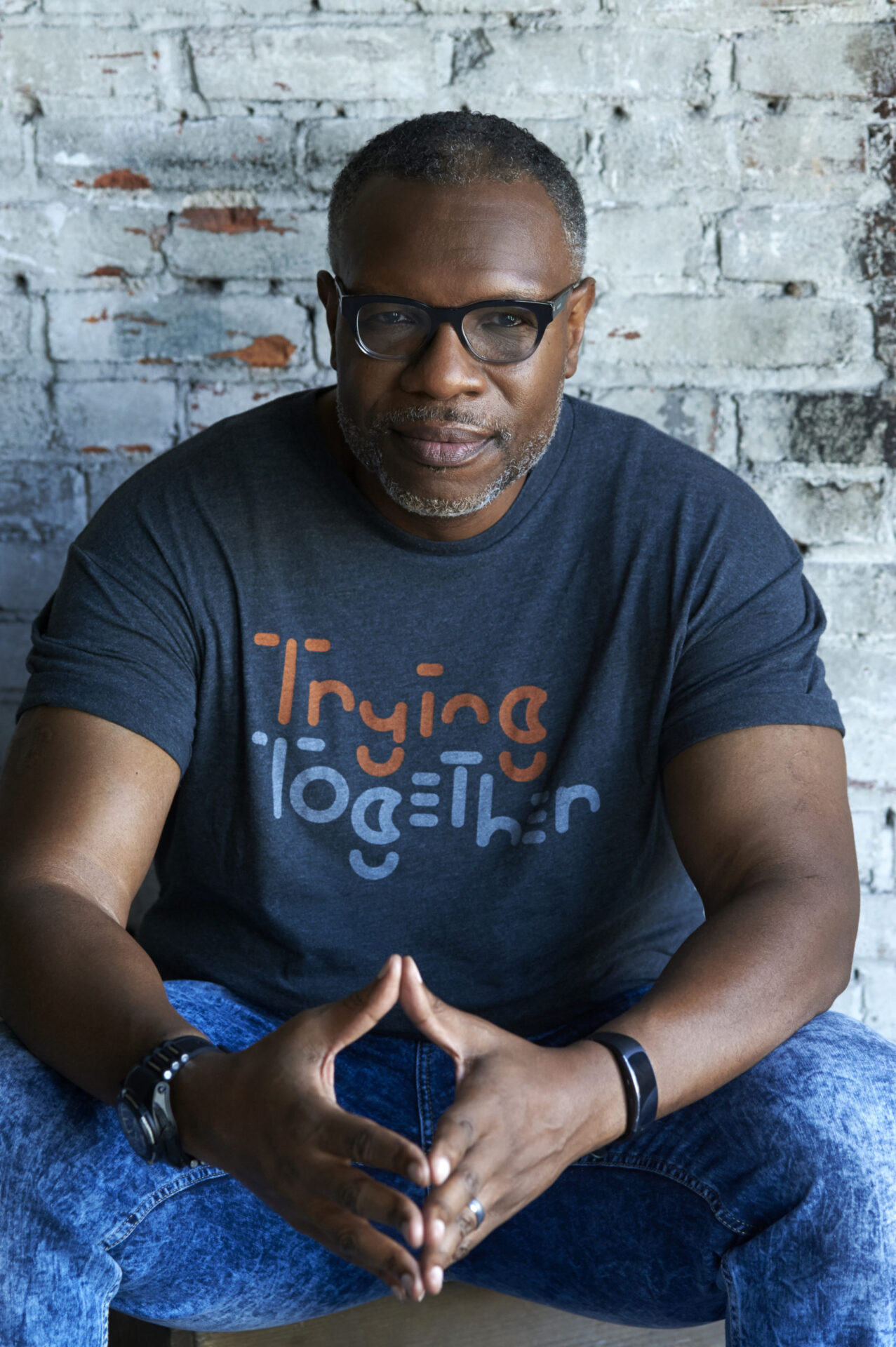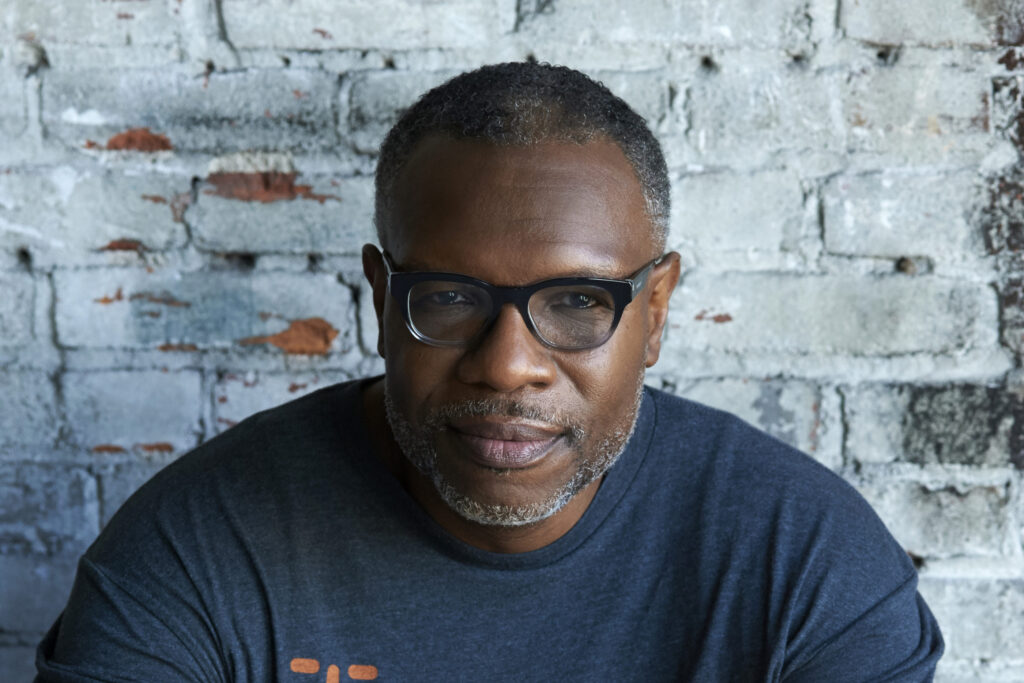Dr. Chuck Herring is softly repeating: “And it don’t stop/and it don’t quit.”
Even with a cursory knowledge of hip-hop, you would likely know these words are so often repeated in rap music that there is debate over who said them first. Dr. Herring says the words now not to show off his MC skills (he was a music producer in the past), but to show how the spirit of Hip-Hop influences his life as an educator.
“I said ‘And it don’t stop/and it don’t quit’ so many times I realized: I just cannot stop, I cannot quit.”
And today, he’s still going strong: Dr. Herring is the new Director of Diversity, Equity and Inclusion at South Fayette Township School District. This Pittsburgh native, who was raised in Wilkinsburg and attended Wilkinsburg High School, graduated, in his words, with a “middle of the pack 2.3 GPA.” Now, he is known by many of his students as the G.O.A.T., the greatest of all teachers.
Though, this is a sentiment he disagrees with: “The G.O.A.T.? I am married to her!” he says with a smile that emanates through the phone. His wife is Dr. Christine Herring, Director of Support Services at Sewickley Academy.
We sat down with Dr. Herring to learn more about how his experiences as a learner and a lover of Hip-Hop have shaped his journey in education.
Reflecting on how his experience as a student impacts his role as an educator
“So check this out…there is this kid, his parents passed away, so he has to live with his brother. This kid is always out and about, throwing sticks and doing things kids do. Then he meets this guy. This guy teaches him how to do all this cool stuff, like fishing. But then the police come and they are looking for this guy, but this kid doesn’t snitch…Do you want to read this book?”
Would your 14-year-old self want to read this book?

Dr. Herring is describing Great Expectations by Charles Dickens, in a way that “reframes” the curriculum to connect with students. involves looking at different perspectives and it is one of the concepts that is core to Dr. Herring’s hybrid approach to education.
As a student, Dr. Herring often wondered: “‘Why am I learning this and why is this important?’” This question continues to shape why he has embraced his own take on hybrid learning.
“In essence, we are creators of our own education. We have guidance from educators, but the best learning is where you develop this hybrid space,” he explains. “The teacher has skills and knowledge they want to impart on the learner. Conversely, the learner has a certain set of skills and knowledge that they already have. So, if you have true learning occurring…it’s not just flash drive learning…where we plug and deposit information…[it is] learning in a hybrid space, when you have the opportunity to have discourse and learn and gain from each other.”
Successful reframing, like Dr. Herring did with Great Expectations, depends on knowing your students, and knowing your students means you have to build meaningful relationships that allow for communication and co-learning/teaching. That’s why Dr. Herring includes relationship building as another key element in his hybrid learning form, beginning with the relationship each student has with themselves.
He was introduced to this concept as a 6th grader in Mrs. Earlene Harvey’s classroom of mostly Black students. In her classroom, in the now closed Allison School, she hung a big sign that read “I Am Somebody.” Dr. Herring remembers that she had students recite this phrase aloud. Today, Dr. Herring shares this quote with his students, along with his personal mantra: “Because I am…Chuck Herring.” He wants students to know that “they are somebody” and that when faced with one of the toughest questions we all encounter—Can I do it?—the answer is yes, “because I am…[insert your name here].”
Approaches like Learning/Congratulations and Mirrors/Windows also help Dr. Herring develop relationships with students. Learning/Congratulations is the simple but priceless act of the educator noting students’ success in learning, from grand concepts to the smallest nugget of newly acquired knowledge and congratulating them on their success. Mirrors/Windows represents the essence of “you have to see it to be or believe it.” As Dr. Herring explains, he is the mirror for Black students so they can see themselves in a position they may have never imagined, because they may never have seen someone who looks like them assume that role. For other students, he is a window showing the multifaceted and limitless ability of what a Black person can accomplish.
In turn, Mirrors/Windows connects directly to his Hip-Hop influences.
How Hip-Hop and other influences impact Dr. Herring’s education style
“I am a window into another world of something [non-Black students] have never experienced. I am professional, a parent, a husband…my family is successful, but I am also very much Hip-Hop. So, I am 100% my authentic self…Hip-Hop is an attitude for me, it is what’s inside of you.”
When asked how a classroom, a school district, or a community can effectively deal with issues around diversity, equity and inclusion, Dr. Herring answers simply: “We do it together.”
Together means implementing Dr. Gregory Norris’ Handprint model, originally developed within the context of the climate crisis. Handprints are defined as intentional acts that offset footprints, or harm-causing actions. Dr. Herring believes in making “handprints” in everything from one-on-one interactions to lesson planning, school policy and school publications. It’s about working together on an intentional effort to create healing where diversity, equity and inclusion can succeed.
“We always talk about about micro-aggressions, but what about micro-progressions?” Dr. Herring asks, and then chuckles. “I think I just made up that word, and that’s pretty cool.”
As an example, he says if someone is mispronouncing someone’s name, correct them. “Micro-aggressions build up to create harm, micro-progessions can build up to heal. Hashtag #HandprintsHealFootprints.”
Just like the big work needed to create a better and cleaner path for the environment, in education, the work of equity and inclusion is daunting. From the way students’ knowledge is evaluated to culturally biased curriculum and efforts to represent and celebrate the multicultural reality of our region, it can be overwhelming. On this, Dr. Herring quotes Denzel Washington’s Robert McCall in the film The Equalizer: It’s about “progress not perfection.”
On applying the Handprint model to social justice work
On September 5th, State Senator Pam Iovino Tweeted: “I met with Dr. Herring and two students whom he’s working with to develop SHOUT: Social Handprints Overcoming Unjust Treatment. Their work to make schools cultural-responsive is inspiring. I am proud to support them.”
SHOUT began as one chapter at South Fayette, co-lead by two students, best friends, who are both Asian, one is Muslim and the other is Hindu, “the irony of their relationship is if they were in another space, they may not have been permitted to be friends,” Dr. Herring explains. SHOUT has evolved as a way to actively integrate so much of what makes Dr. Herring’s approach to education special. It’s a way to create those handprints, to be mirrors/windows, to create relationships and reframe, and yes, to even remake the way a school exists.
What began as one chapter is now several, including those at Avonworth, Bethel Park and Hampton Township school districts. If State Senator Iovino and Dr. Herring have their way, SHOUT could have chapters state-wide in Pennsylvania.
Though the road to achieving true diversity, equity and inclusion is long, one thing is for certain: Dr. Herring and SHOUT definitely won’t quit.
For More:
- View SFHS Media “Handprints Heal Footprints” video on YouTube
- View Dr. Herring’s TedX talk
- Watch Dr. Herring’s videos in WQED’s Support Our Schools series
- Learn more about Hip-Hop Pedagogy
- Learn more at the Center for Urban Education
